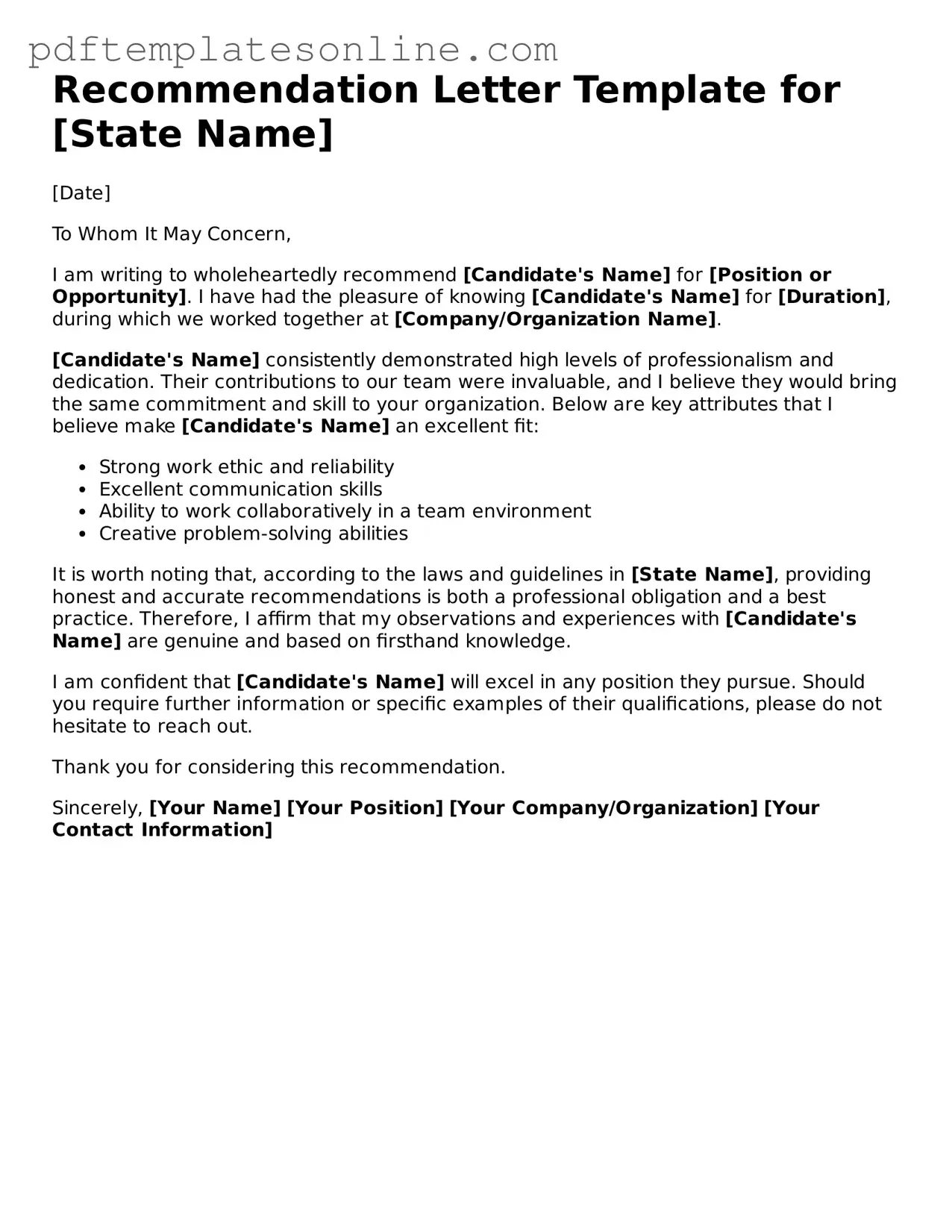Filling out a Recommendation Letter form can be a daunting task, and many people make common mistakes that can undermine the effectiveness of the letter. One frequent error is failing to personalize the letter. A generic recommendation lacks impact and does not truly reflect the individual's strengths. Instead of using a one-size-fits-all approach, it’s essential to tailor the content to the specific person and situation.
Another mistake is neglecting to provide specific examples. General statements about a person's character or abilities can come across as insincere. Including concrete examples of achievements or skills can greatly enhance the credibility of the recommendation. This gives the reader a clearer picture of the individual’s qualifications and contributions.
Some individuals also overlook the importance of the relationship between the recommender and the candidate. Clearly stating how the two are connected, whether through work, school, or another context, establishes credibility. Without this context, the recommendation may seem less trustworthy or relevant.
Additionally, many people fail to address the letter to a specific person or organization. A generic salutation like "To Whom It May Concern" can diminish the letter's effectiveness. Whenever possible, addressing the letter directly to the admissions committee or hiring manager makes it more personal and engaging.
Another common oversight is not following the guidelines provided by the institution or organization. Each entity may have specific requirements regarding length, format, or content. Ignoring these guidelines can lead to a recommendation that does not meet the expectations of the reader.
Some recommenders may also forget to proofread the letter. Spelling and grammatical errors can detract from the professionalism of the recommendation. Taking the time to review the letter ensures that it is polished and reflects well on both the recommender and the candidate.
Moreover, it’s essential to be honest in the recommendation. Overstating qualifications or embellishing achievements can backfire. If the candidate is not as qualified as portrayed, it could damage the recommender's reputation and trustworthiness.
Lastly, people often forget to include their contact information. If the recipient has questions or needs further clarification, providing a way to reach the recommender is crucial. Including an email address or phone number can facilitate communication and reinforce the recommendation's credibility.
